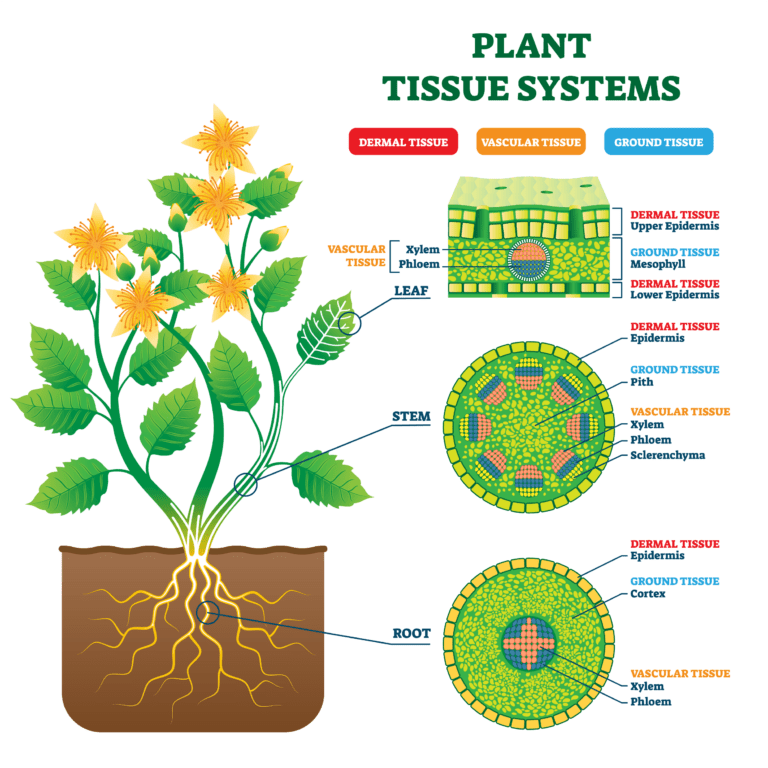
The challenges of plant DNA extraction, why it is important, and how to do it successfully
The concept of extracting DNA from animals is not a foreign one. When it comes to DNA extraction, most people tend to think of blood or tissue samples. Some typical tissue samples from animals and humans include skin, hair, nails, organs, muscle, bone, and more. But what about plants? Plants are made up of dermal, vascular, and ground tissues. Primary dermal tissues, called the epidermis, make up the outer layer of all plant organs (e.g., stems, roots, leaves, flowers). Since both plants and animals have tissues, how does DNA extraction from plants compare to animal samples?
Is it more difficult to extract DNA from plants?
Unlike animal cells, which are enveloped in a soft phospholipid bilayer membrane, plant cells have an additional outer cell wall made of cellulose that provides rigidity to their cells. DNA extraction from plant tissues, such as leaves, requires the breakdown of the rigid cell wall either by chemical, enzymatic, mechanical means, or some combination of these three methods. Plant DNA extraction requires homogenization to remove cell walls and a soapy substance to degrade membrane lipids. Next, the separated DNA from the mixture is precipitated by using alcohol. Extraction of high-quality and pure DNA is a difficult task and requires complex processing.

Some plant cells’ metabolites may contaminate DNA during precipitation and interfere with DNA extraction. Comparatively, animal cells have no cell wall to break down; thus, DNA is easier to extract from animal cells.
A glimpse into DNA extraction from plant tissue
Plant leaves of fifteen to twenty days old are optimal for the extraction of DNA from plant tissues. The rigid cell walls can be broken down either mechanically or non-mechanically (enzymatic or chemical methods).
- Mechanical
The cell walls are made up of a rigid extracellular matrix which lends itself well to the unique features of a plant’s lifestyle. They can be ruptured mechanically by pestle and mortar, bead beating, sonication, homogenization, exposure to freeze-thaw cycles, or high temperatures (microwave, autoclave). These extreme physical disruptions to the plant sample can enable the breakdown of the cell walls.
- Enzymatic
The use of enzymes or chemicals to disrupt cell wall components is known as the non-mechanical method. Often these methods are used in conjunction with mechanical force to ensure complete breakdown of the plant cell wall. There are various naturally occurring enzymes such as cellulases, chitinases, lysozymes, and more. These enzymes target specific components of the extracellular matrix. For example, cellulase breaks down cellulose (the main element in plant cell walls and vegetable fibers).
- Chemical
The chemical composition of the cell wall is composed of: polysaccharides, cellulose, and pectin. Other polymers such as lignin, suberin, or cutin are often anchored to or embedded in plant cell walls. Targeting these polymers with the appropriate chemical substance can dissolve them. Some methods use hazardous chemicals like ether, chloroform, and alcohol. Alternately, there are safer, non-organic solvents such as Cetyltrimethylammonium Bromide (CTAB) buffer.
Leaf tissue generally contains polysaccharides, polyphenols, and tannins in high amounts, which can contaminate DNA and affect downstream analyses like polymerase chain reaction (PCR). There is a need to remove these metabolites after the entire process (disrupting the cell wall, plasma membrane, nuclear membrane, and precipitating DNA) by several chemical and enzymatic methods.
Why is it important to isolate plant DNA?
Many industries are using isolated plant DNA to modify plants. Researchers can engineer a plant with seeds inheriting modified genes by isolating DNA from organisms with desirable traits, such as resistance to pesticides, and injecting them into the target plant’s genome. GMO testing laboratories are now utilizing GMO testing to quantify the presence of various traits such as the Roundup Ready®, LibertyLink®, or DMO Dicamba-resistant traits. Plant pathologists can study the genetic causes of plant disease by analyzing their DNA. Agriculturalists may use extracted DNA to find if the plant has any mutations in its genes, making it better or worse suited to grow in certain conditions.
Researchers can use plant DNA extraction kits to obtain isolated plant DNA for these various applications. Omega Bio-tek’s line of E.Z.N.A.® or Mag-Bind® Plant DNA 96 Kits can process challenging samples rich in polysaccharides, polyphenolic compounds, and enzyme inhibitors to isolate high-quality DNA that does not hamper downstream applications. These kits extract high-yield and high-quality DNA that uses CTAB ionic detergent with a particular binding system and eradicates chloroform extractions. Read more about how Omega Bio-tek has developed a highly versatile line of plant DNA isolation kits for manual and automated methods here: https://www.omegabiotek.com/applications/agriculture/.
